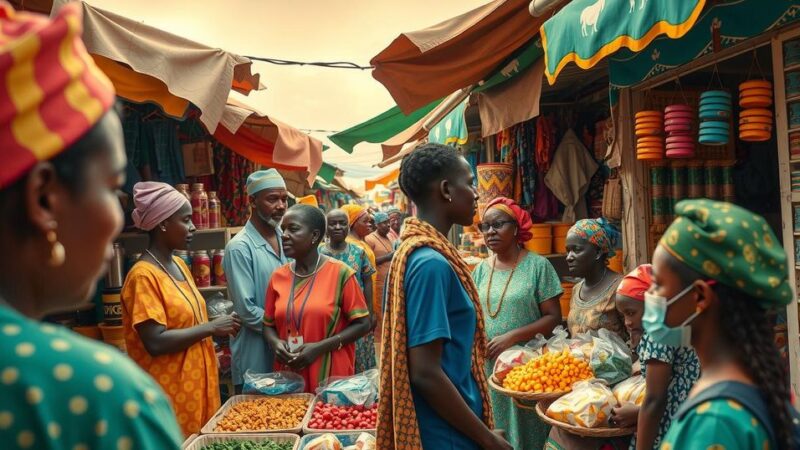Vietnam’s economy exhibits strong growth in exports, particularly in rice and coffee, alongside increasing e-commerce tax revenues. Significant developments include new aviation projects and support for SMEs through financial initiatives. The country is poised to strengthen its position as an international financial center, indicating broad economic resilience and potential for future expansions.
Recent developments in Vietnam’s trade sector highlight significant achievements. Notably, Vietnamese rice has garnered attention among Japanese consumers. Additionally, e-commerce tax revenues have surged with 130 foreign suppliers contributing approximately 2.91 trillion VND (114 million USD) in taxes through the electronic tax portal.
Vietnam’s coffee exports for the first two months reached 1.72 billion USD, thanks to a 37% increase in value despite a 22% decline in export volume. This growth is attributed to rising global coffee prices, as observed by Nguyen Duc Dung, Deputy General Director of the Mercantile Exchange of Vietnam.
The State Bank of Vietnam adjusted the daily reference exchange rate for the US dollar, setting it at 24,793 VND/USD on March 18, marking a decrease of one VND. Furthermore, the finance ministry has extended guidance to support small- and medium-sized enterprises (SMEs) by facilitating connections with financial institutions and experts.
The International Finance Corporation (IFC) and Switzerland are collaborating to enhance supply chain finance in Vietnam, bolstered by a grant of 5 million Swiss Francs (5.6 million USD). This initiative aims to assist over 500,000 SMEs in accessing financing up to 35 billion USD by 2029.
In addition to rising coffee exports, Vietnam has become Brazil’s second-largest aquatic product supplier, with exports totaling 655 million USD in February. Overall, aquatic product exports increased by 44.5% year-on-year, leading to a total of 1.42 billion USD for the first two months of 2025.
The State Bank is also formulating a roadmap to eliminate the credit growth quota policy, a measure in place since 2011. In HCM City, bank lending growth has slightly declined, with outstanding credit reported at 3.936 trillion VND, reflecting a decrease from the previous month but an increase year-on-year.
The e-tax system resumed full operations following a temporary suspension aimed at improving tax management. Additionally, customs trade achieved 1.05 billion USD on the first day of a new operational model that streamlines the customs structure.
Policies facilitating growth in industrial real estate are expected to boost foreign direct investment, creating more opportunities. Vietnam Airlines and Vietjet Air are set to operate flights from the new terminal at Tan Son Nhat International Airport, which can handle 20 million passengers annually, with an investment close to 11 trillion VND (431.2 million USD).
Moreover, Vietnam’s export revenue for January-February reached 65.2 billion USD, while imports totaled 62.9 billion USD, resulting in a trade surplus of 235 million USD. The State Bank noted a minor increase in the reference exchange rate to 24,794 VND/USD on March 17.
Vietnam Airlines plans to restore direct flights from Hanoi to Moscow on May 8 as part of its strategy to launch 15 international routes this year. Experts believe Vietnam is well-positioned to develop an international financial center, with the potential for significant benefits to the economy by focusing on human capital and infrastructure development in building these financial hubs.
Moreover, Hoa Phat’s hot-rolled coil products will not face EU anti-dumping duties, which could enhance the export prospects of downstream businesses. Despite challenges, Vietnam anticipates a rebound in rice exports, with over one million tonnes shipped within the first two months of the year due to sustained global demand.
In summary, Vietnam’s economy is showing notable resilience and growth across various sectors, including rice and coffee exports, e-commerce tax revenue, and advancements in supply chain finance for SMEs. Strategic expansions in aviation and potential development of an international financial center indicate a forward-looking economic policy that aims to enhance trade and attract foreign investment. The government’s interventions are indicative of a robust approach to navigating current economic challenges and seizing emerging opportunities.
Original Source: en.vietnamplus.vn






